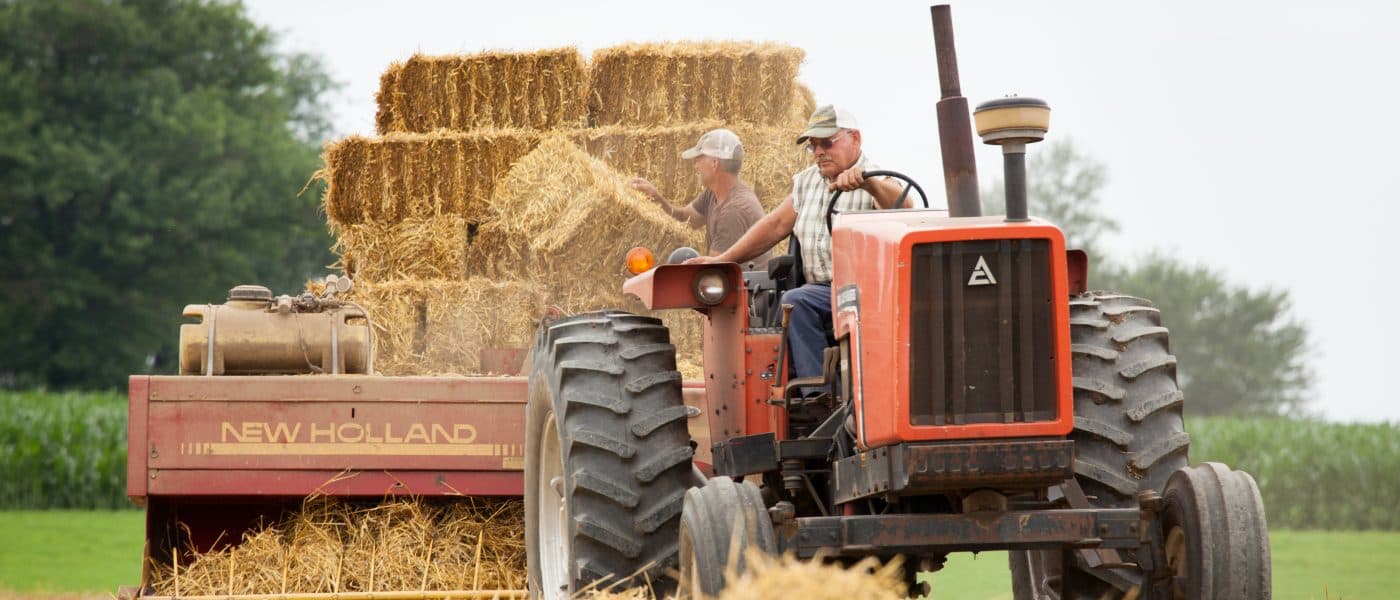 For those of you who are thinking “Mmm…dinner,” I’m glad you’re reading this blog–we have much to teach you!
For those of you who are thinking “Mmm…dinner,” I’m glad you’re reading this blog–we have much to teach you!
Before I give the answer away, let’s talk a bit about farmer’s share of the retail dollar (hint, hint).
The simple food chain of days past, in which a farmer grows food and sells that food directly to the consumer, is cropping up again all over the nation. The growth of farmers market and Community Supported Agriculture (CSA) programs is at an all time high, and more and more people–farmers and consumers alike–are getting involved in direct markets. As a result, farmers are able to capture a greater share of the retail food dollar and consumers are able to avoid many of the processing, distribution and marketing costs typically tacked on to the price of supermarket goods.
The majority of our food, however, has a much longer path from farm to table – getting all the more complicated every day. Think of a pin-ball machine, the ball bouncing from lever to lever, working its way through chutes and channels, up and down, even side to side, depending on the whims (and luck) of the person at the controls. Our food, oddly enough, often takes a similar path, being passed from player to player in an effort to both add “value” (via processing, packaging and other marketing strategies) and to keep up with the erratic trends and demands of an increasingly global food system. Through each hand our food passes, a part of the food dollar is snatched, and the gap between what we pay at the checkout stand and what ends up in our family farmers’ pockets is widened.
Thanks to the number crunchers at National Farmers Union (NFU), we now have some current stats to give us a better idea of the farmer’s share of our grocery bill. NFU looked into a select market basket of goods, ranging from carrots to cheddar cheese to top sirloin steak. (Now back to the riddle…) Turns out a six-pack of beer and box of cereal contribute very little to the farmer’s bottom-line – farmers receive about two cents per each dollar we spend on those items. In other words, when we’re purchasing these products we aren’t really paying for the food so much as the transport, processing, packaging, wholesaling, retailing, etc. etc.
Fortunately for our family farmers, these products aren’t representative of the average cut, which, according to NFU, is around 20%. Yet, if we look at historical data, we find that the farmers’ share of the food dollar has been slipping for years. According to Bruce Gardner, author of “American Agriculture in the Twentieth Century: How it Flourished and What it Cost,” farmer share fluctuated around a mean of 40 percent between World War I and 1970, but has declined ever since to its current state.
Furthermore, this 20% average isn’t referring to farmer profit, per se, but what the farmer receives and then must use to repay farm expenses (expenses that have skyrocketed to record highs in recent years).
So, what can you do to ensure that more of your food dollar is actually paying for food and making its way back to the family farmer?
- Go straight to the source! Through farmers markets, roadside stands, CSAs and even internet-sales, look for increasingly available opportunities to shorten the food chain and buy direct from a farmer.
- Support domestic fair trade. Groups like Equal Exchange are well on their way in developing a domestic version of the international fair trade program that guarantees fair prices and a living wage for farmers.
- Look for local food in restaurants. When you buy meals made from locally sourced food you can cut a number of links from the food chain and, in turn, ensure more of your money is making it back to the local farm economy.
- And, finally, buy fresh, unprocessed, unpackaged goods. Not only do these foods have fewer additives and packaging, making them a healthier choice for you and the environment, they have fewer added processing and marketing costs, saving more of your food dollar for the farmer and your own pocketbook.
Sources:
Gardner, Bruce L. “American Agriculture in the twentieth century: how it flourished and what it cost.” Cambridge, Mass.: Harvard University Press, 2002. (pg 155).

